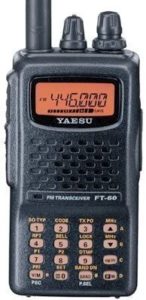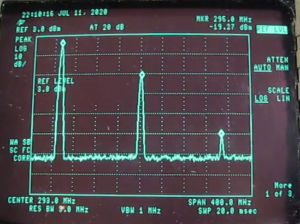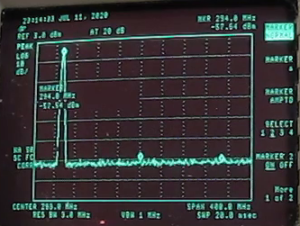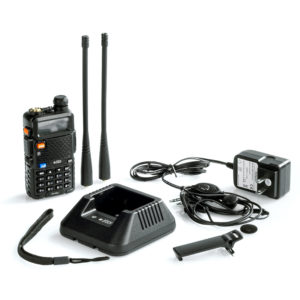One of the responsibilities of the Technical Coordinator in the Ohio Section is to submit something for the Section Journal. The Section Journal covers Amateur Radio related things happening in and around the ARRL Ohio Section. It is published by the Section Manager Scott – N8SY and articles are submitted by cabinet members.
Once my article is published in the Journal, I will also make it available on my site with a link to the published edition.
You can receive the Journal and other Ohio Section news by joining the mailing list Scott has setup. You do not need to be a member of the ARRL, Ohio Section, or even a ham to join the mailing list. Please sign up!
If you are an ARRL member and reside in the Ohio Section, update your mailing preferences to receive Ohio Section news in your inbox. Those residing outside the section will need to use the mailing list link above.
Updating your ARRL profile will deliver news from the section where you reside (if the leadership chooses to use this method).
Go to www.arrl.org and logon.
Click Edit your Profile.
You will be taken to the Edit Your Profile page. On the first tab Edit Info, verify your Email address is correct.
Click the Edit Email Subscriptions tab.
Check the News and information from your Division Director and Section Manager box.
Click Save.
Now without further ado…
Read the full edition at:
THE TECHNICAL COORDINATOR
Jeff Kopcak – TC
k8jtk@arrl.net
With the continuation of ‘ronaFest 2020 and the latest blah-blah-blah from our GOV, individuals who didn’t have time to study for their ham exam have found themselves doing just that and passing their test! I’m hearing more new hams on the bands. Welcome. Most want to purchase a new radio as a reward. A new VHF/UHF handy-talky (or HT) is on many-a-new-ham’s shopping list. Great idea. There is a vast and wide range of features and options. For a while now, many new hams, and even current hams, have been purchasing Baofeng radios. Please don’t.

It’s been awhile since I’ve written about my objection with Baofeng radios. Since then, they haven’t improved at all. Baofeng UV-5R radios cover the 2m and 440 ham bands and are available for about $25. Sounds great except nearly all of their radios do not comply with Amateur Radio service regulation, known as Part 97. Part 97 acknowledges the operator is responsible for operating all equipment within the limits set forth for the Amateur Radio service under FCC regulation. Other regulations, such as Part 90 (public service and business band, among others), certifies the specific piece of equipment stating it passes technical requirements. Each Amateur Radio license holder is responsible for the proper operation of all equipment.
It’s a very compelling argument, $25 for a handheld. Perfect options for new hams, young hams, or public service events were radios are prone to damage and misuse. Destroy it and it is $25 vs. a couple hundred, or $700, to replace. Newer, less expensive, radios could replace older radios that maybe didn’t have PL, low power TX, or were single band. Baofeng manufactures radios targeted at radio operators, including hams, for next to nothing. Inconsistencies in firmware versions lead to differing sets of features, programming software is in Chinese, issues getting the programming cable to work, complaints about the lack of support, and lack of a usable manual. I’m not installing software from China on my PC. You get what you paid for and even more than you bargained.
Baofengs have this nasty habit of transmitting everywhere at once. That’s tongue-in-cheek for they decimate radio spectrum by producing spurious emissions up and down the RF spectrum, which interferes with other licensed services. Part 97 specifically addresses this type of emissions in 97.307(e):
The mean power of any spurious emission from a station transmitter or external RF power amplifier transmitting on a frequency between 30-225 MHz must be at least 60 dB below the mean power of the fundamental. For a transmitter having a mean power of 25 W or less, the mean power of any spurious emission supplied to the antenna transmission line must not exceed 25 µW and must be at least 40 dB below the mean power of the fundamental emission, but need not be reduced below the power of 10 µW. A transmitter built before April 15, 1977, or first marketed before January 1, 1978, is exempt from this requirement.
Boldness added for emphasis. As hams, we are given plenty of leeway in how we use our frequencies and the ability to self-regulate. It’s up to each of us to make sure our radios are compliant and we are good stewards of the spectrum we’ve been afforded. It’s funny because I’ve been in radio club meetings were hams are the first to complain about interference, pirate stations, and unlicensed devices in the amateur spectrum. Yet, it seems, very few follow regulations minimizing interference to other devices and services. By not following Part 97, hams are in violation of their license which could lead to fines and even revocation.
The ARRL published their findings in a November 2015 QST article and another in January 2020. I came across yet another video demonstrating the non-compliance of these radios with Part 97. In this video, he keeps mentioning the 60 dB requirement. I believe that is incorrect because these radios are 25 watts or less and would fall under the 40 dB requirement.


Every transmitting device has these spurs. The manufactures employ filtering within the radio to knock down these spurs to a level that complies with regulations. Baofengs likely have none of this filtering or very, very, very poor-quality filters. The ARRL found units tested from big name manufactures are 100% compliant.
I stopped using and recommending Baofeng radios because they do not come close to meeting FCC requirements. No way would I transmit using one of these radios. Only receiving is fine, transmitting is the problem. Many tests from both amateur and professionals have validated these radios are not worth the money. Better off taking your money and throwing it out the window.
What radio, that meets Part 97 requirements, is available for the price? About the cheapest dual-band hand held radio is the $80 Yaesu FT-4XR or the $160 Yaesu FT-60R, which are fantastic entry level radios and very much Part 97 compliant. DMR radios compete on price and most were found to be compliant. Many usual ham features are missing and programming difficulty have not really put DMR radios on the same playing field.
Few years ago, I found another option. Unfortunately, the company has “Baofeng” in the name which doesn’t help its cause. A company called “Baofeng Tech,” or BTech, is a US based company offering the UV-5X3 for under $60! They have comparable offerings to other Baofeng models too. BaoFeng Tech not only sells improved Beofeng radios but they also support their products directly. It even ships free and supports the ARRL if bought using Amazon Smile.

The radio looks and acts like a UV-5R. BaoFeng Tech updates the firmware, modifies the radio by installing better filtering on the transmitter, and includes an easy-to-read, nicely printed, 85-page manual. The UV-5X3 comes with all the same accessories including belt clip, antennas, charger, and ear piece. All original Baofeng accessories work too. To my surprise, they even squeezed in the 220 MHz (1.25m) band into the radio making it a tri-band radio!
BaoFeng Tech assured me their radios meet spectral requirements for Part 97. I had mine tested a few years ago at the Cleveland Hamfest by AD8G (ex KD8TWG). On VHF, one harmonic was a little higher than 40db down, UHF was spot-on. I feel very comfortable transmitting with this radio knowing it is compliant.
The CHIRP free programming software will program the UV-5X3. If you’re into the RT Systems programmers, the BTS-5X3 programmer is needed. The RT UV-5R programmer (BAO-5R-3) will not work with the UV-5X3. However, the same cable (USB-K4Y) will work on both radios.
Now there’s no excuse to get a compliant radio that is reasonably priced like the Yaesu FT-4XR, Yaesu FT-60R, or a BaoFeng Tech UV-5X3. These are great entry-level VHF and UHF radios. They can replace older radios, be a Christmas/holiday gift, and are options for young hams or new hams that just received their ticket. If you would like to check radio compliance, a number of Technical Specialists have equipment that can validate if it follows regulations. Also look for “test and tune” nights at a local club meeting – maybe when we’re all seeing each other again.
Thanks for reading and 73… de Jeff – K8JTK
